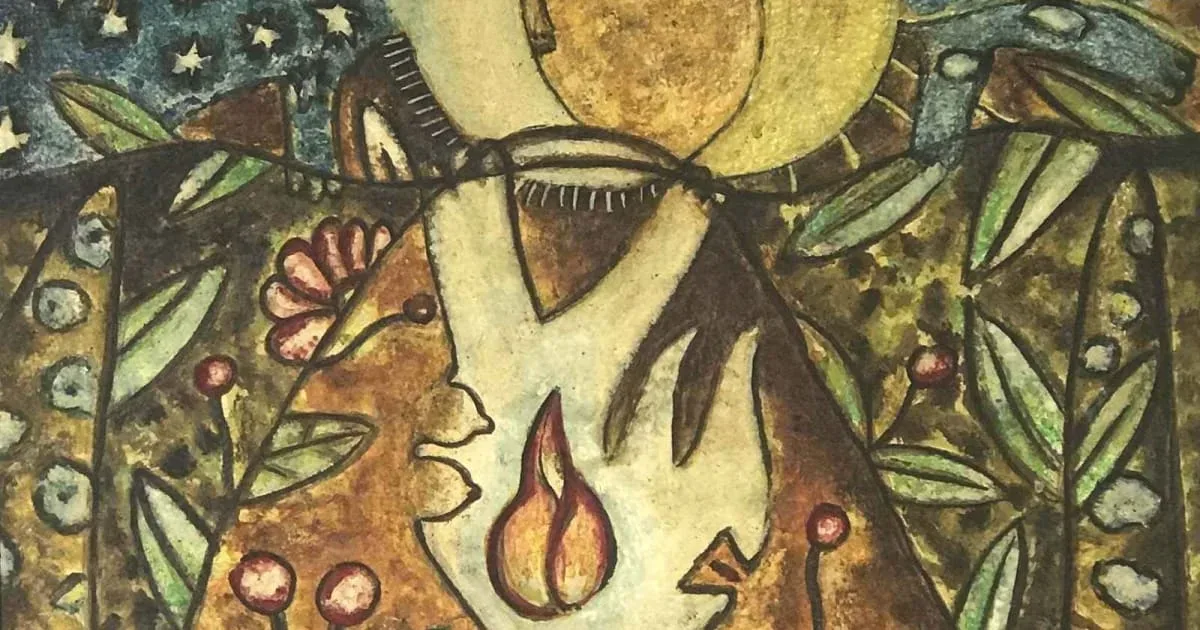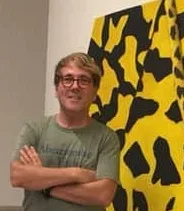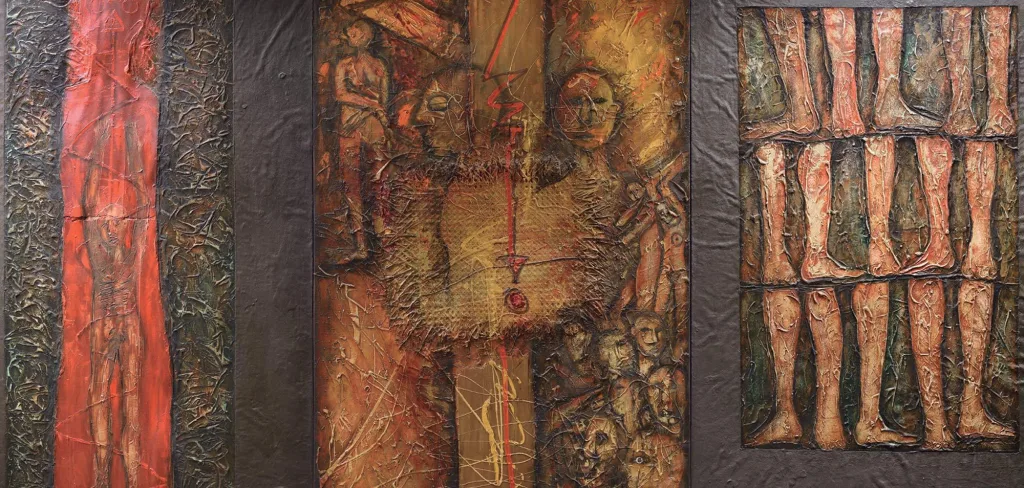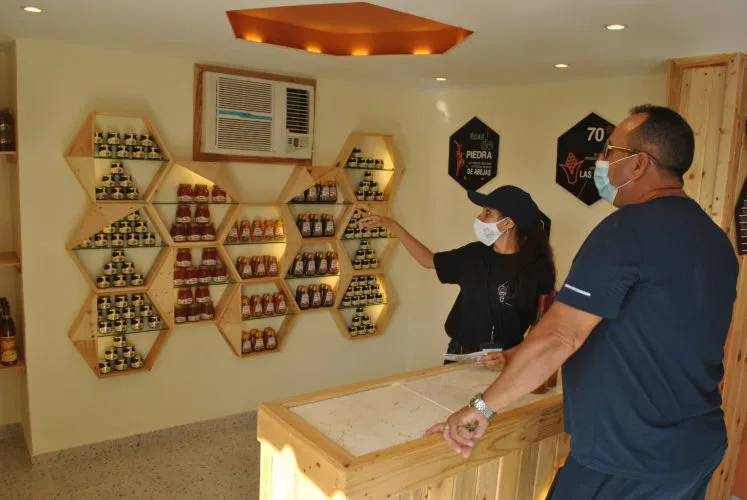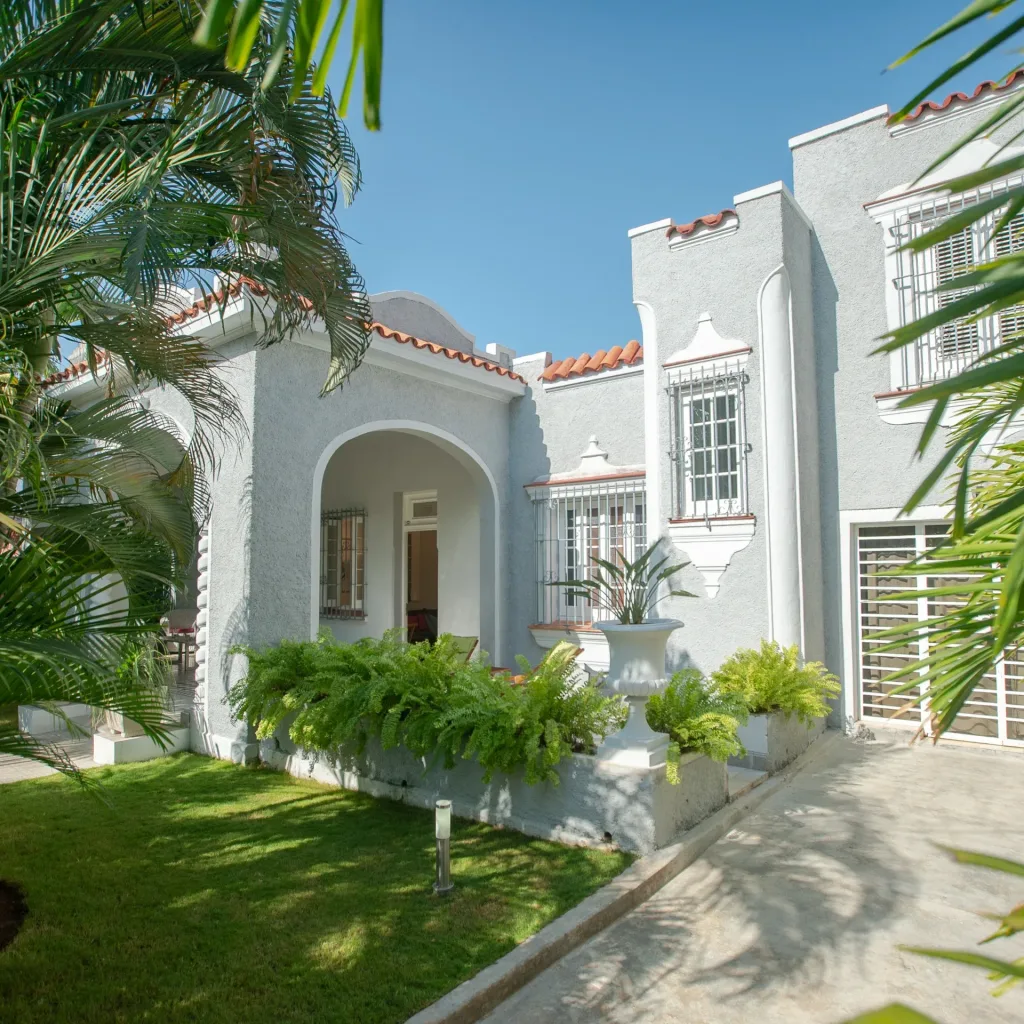At first sight, when we look at the artist´s play, the color appears catching us in a weave of shapes and colors. Later on, going inside the varied germinations that cover his paintings, we just walk on solid ground through this natural maze where the true sense of the peculiar language of the Cuban and Caribbean essence is revealed.
Ever Fonseca (National Prize of the Plastic Arts 2012), through the years, has caught the personality of the beings that populate his creations. We could say he is a painter jigüe who transforms life, remembers, lives and creates. His work is the Cuban itinerary; it is a dialogue-poetic between the vegetation and the man.
The artist, in his work (on any surface), tells us anecdotes, perceptions and myths well known in his rural landscapes. The spectator will be in contact with one of the most authentic Cuban painters, because his ways cannot be comparable with anyone else’s, besides of recognizing in that play very proper signs in its language.
Ever Fonseca (Manzanillo, 1938) was born in a green caguayo that is floating in the Caribbean, and it will always live inside him, because it is running on his skin since his eyes were opened to the world. There he knew Don Jigȕe*, an inseparable companion on real and pictorial adventures. Held by his hand, he walked through valleys and mountains, he drank the water of the rivers, and he touched the colors of the dawn and the shadows of the night. All that splashed his play with a proper congenital Cuban characteristic, and special sensibility which is now accumulated in canvas, cards, wood and clay.
That is why the works of this creator, founder and best student from 1962 to 1967 of the National School of Arts (ENA), professor for more than 20 years in teaching Plastic Arts; he carries the color of the countryside, the sky. “My work is circumscribed to the Isle and it is a vital work where the sea plays a fundamental role although it doesn´t appear in the painting”, said the artist. In these pictorial fables very diverse animals appear, along with an amazing vegetation, a whole concert of vision-sonority from trees, birds, little reptiles…that silhouette on the distance the sun or the moon, depending on the time fixed on the surface.
From a technical point of view, there is an emphasis in using the line as a constructive element to express ideas, as there is not one discordant element that conspires against the perception of form-message, and all figures are resolved by means of vital lines. But a very important thing is that when we look at his play although time goes by, the wild touch of his personality and creation couldn´t have been eliminated.
At the beginning of the 60´s and 70´s it was observed very sensuous lines in his works. Now there is peace, sedimentation, rest, factors corresponding to a biological maturity gained through the years. “Although respecting the sensuous and love, in the essence I am the same, but I have been transformed outside, by the skin” he commented. His play is characterized by the organic sense of the development which runs at the rhythm of the years: the time of the vivid life. All these characteristics have seduced spectators from Cuba and the world through the years and no less awards have been obtained by him.
*Jigüe (It is an element of the imagination due to the curiosity and sensibility of one person who transits in the countryside during the night and sees by a peculiar climate there, an apparition. It is a subjective state without a defined form, it is mimetic in color and kaleidoscopic in its transformation”, says Ever).It´s Ever himself.

